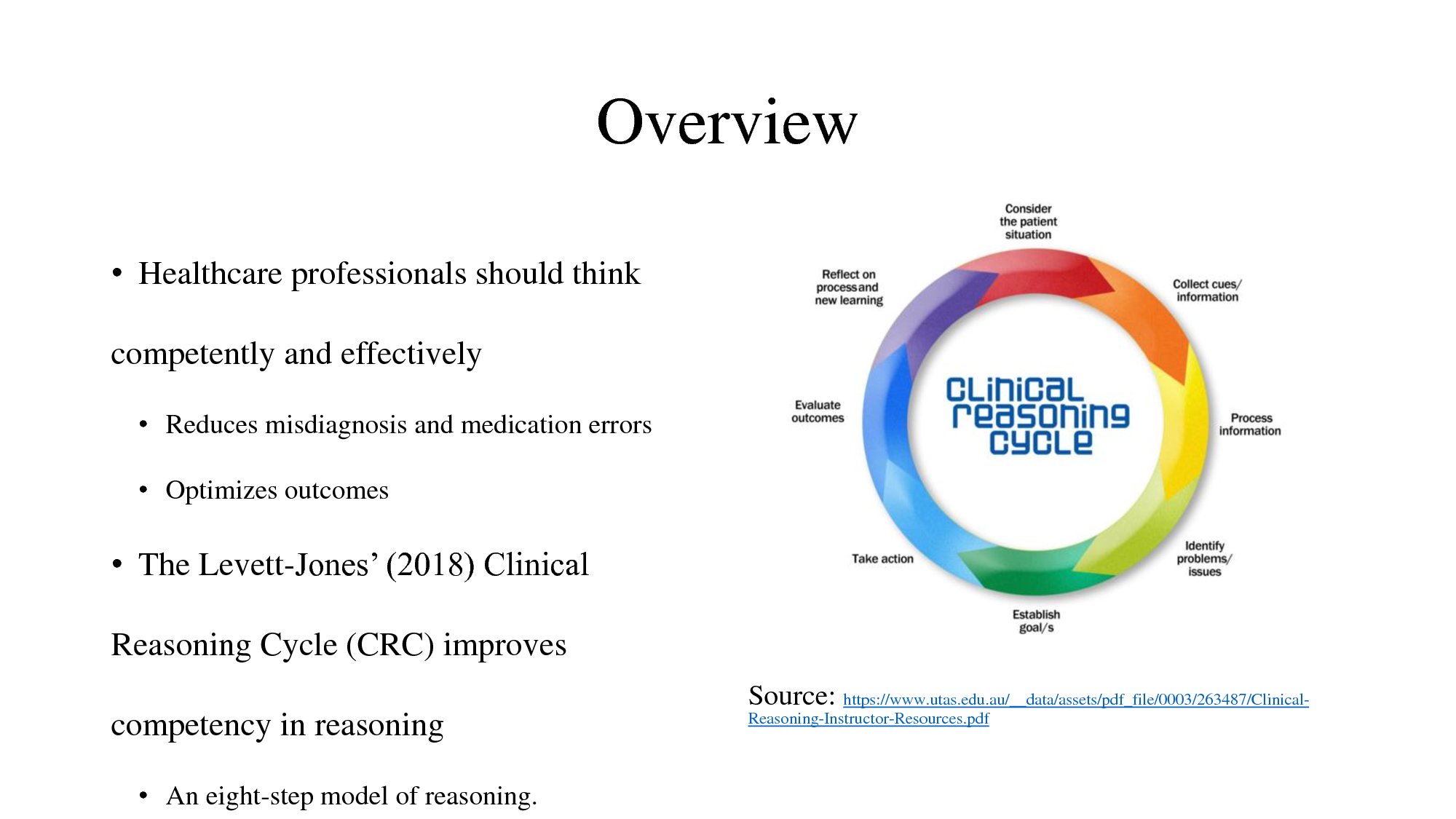During the first stage of the clinical reasoning cycle, an expert forms a small group of hypotheses within 5 minutes. Experts have the advantage over intermediates because their short-term memory allows them to hold up to five items at a time. The initial hypotheses are refined and serve as the framework for additional focused information gathering. Intermediates, on the other hand, have to go through more iterations of the clinical reasoning cycle.
Clinical Reasoning
In the Clinical Reasoning Cycle, nurses must consider the most current information about a patient’s condition. They must then examine the effectiveness of their plan, including any potential consequences. This information will help them set goals and determine the steps needed to reach those goals. The final phase of the clinical reasoning cycle involves reflection. Nurses must identify areas that could be improved and make necessary changes. Here are some tips to help you better understand the Clinical Reasoning Cycle.
This process has 8 steps: collecting information about a patient, identifying the Issue, setting treatment goals, reviewing results, and applying the clinical reasoning cycle. These steps are crucial in enhancing the quality of your care. It is also important for nursing students and professionals. A clinical reasoning cycle can help nurses better connect with patients and improve patient relations. Nursing students who practice the cycle can make a significant impact in improving the care they give. Here are some examples of the steps in the clinical reasoning cycle:
Levett-Jones clinical reasoning cycle
The Levett-Jones clinical-reasoning cycle is a model that helps healthcare professionals evaluate a patient’s condition and plan appropriate nursing care. The cycle involves discussing goals of care and treatments, evaluating results, and reflecting on lessons learned. This model is extremely useful for evaluating the effects of care and helps healthcare professionals evaluate whether or not actions taken were appropriate. It has proven to be a highly effective tool for a variety of clinical situations, including emergency care.
The clinical reasoning cycle consists of eight steps that are used by health professionals to make the right decisions in the right situations. It encourages critical thinking and problem-solving skills, allowing health care professionals to make better decisions. It also helps healthcare professionals deal with critical patients by improving their decision-making abilities. The cycle helps healthcare professionals avoid potential health risks. Here are some tips for how to apply it in your own clinical practice:
Stages of clinical reasoning cycle
Nursing professionals should be familiar with the different stages of clinical reasoning cycle to ensure that their decisions are based on accurate information. The clinical reasoning cycle involves reviewing patient history, current health status, and pathological and pharmacological patterns. In this stage, the nursing professional must analyze the information and differentiate it from irrelevant information. During the subsequent analysis, the nurse must draw relevant information, formulate judgments, and gauge interventions and outcomes.
The final step in the clinical reasoning cycle is reflection. Reflection is a necessary step for nurses because they must analyze the effectiveness of a treatment plan and identify areas for improvement. This step requires them to reflect on their learning process and identify areas in which they have failed. Once they have made an analysis, they can then decide on the next steps. These steps are important for achieving the highest level of care in a patient’s medical condition.
Importance of clinical reasoning in nursing
In order to apply the principles of clinical reasoning, nurses must possess an understanding of applied science. Such knowledge includes pathophysiology, pharmacology, and fluids and electrolytes, which they use in the actual clinical environment. The clinical reasoning cycle involves identifying relevant information and assessing the relevance and sensitivity of that information to the patient’s needs and situation. This step can be performed with a variety of tools, such as clinical reasoning software.
When beginning the clinical reasoning cycle, nurses must first establish their goals. Next, they must allocate time and a specific procedure to achieve these goals. Finally, they must come up with accurate solutions that are related to the patient’s health. The clinical reasoning cycle requires nurses to analyze and think about their current knowledge and the best way to apply it in the patient’s situation. It is essential to use the knowledge and skills that they acquire while performing clinical reasoning in order to provide the best care possible.
Stages of clinical reasoning cycle in nursing education
The stages of clinical reasoning cycle in nursing education are essential to the practice of nursing. These stages are a continuum and move back and forth until an accurate assessment of the health status of the patient is achieved. In the first stage, the nurse presents relevant information about the patient’s history and current medical condition and then processes the information by identifying cues, drawing information, and evaluating the patient’s current health status. In the second stage, the nurse considers the findings and evaluates them in terms of their potential effects. The last stage involves evaluating the results of the clinical reasoning cycle to determine whether any further improvements are needed.
The stages of the clinical reasoning cycle in nursing education focus on improving the clinician’s ability to think critically and evaluate data. They help nurses make decisions that improve patient care. These processes are essential for nursing education because they help nurses apply critical thinking to clinical decisions. Proper education, guidance, and learning opportunities are essential to this process. By understanding the clinical reasoning cycle, nursing students and professionals are better equipped to address problems in patient care.

